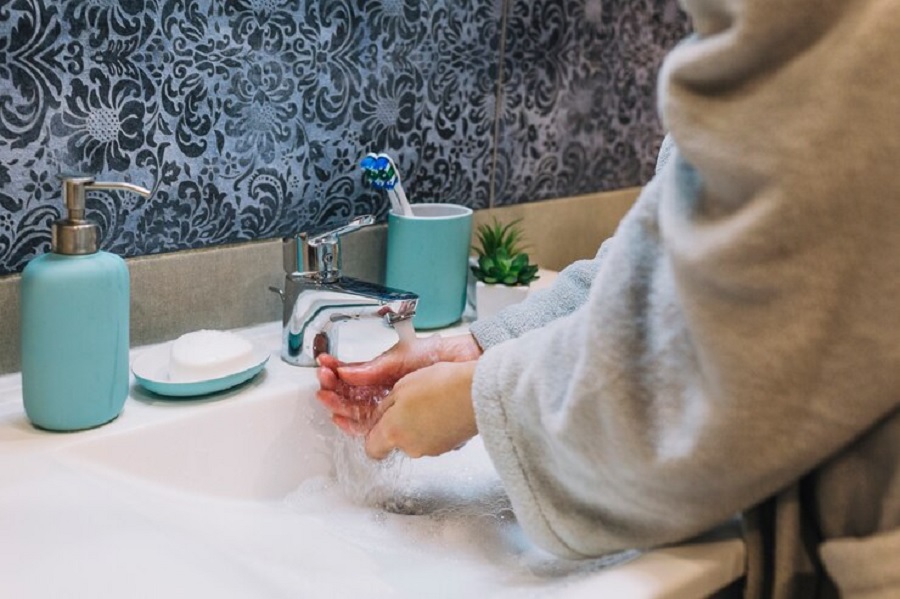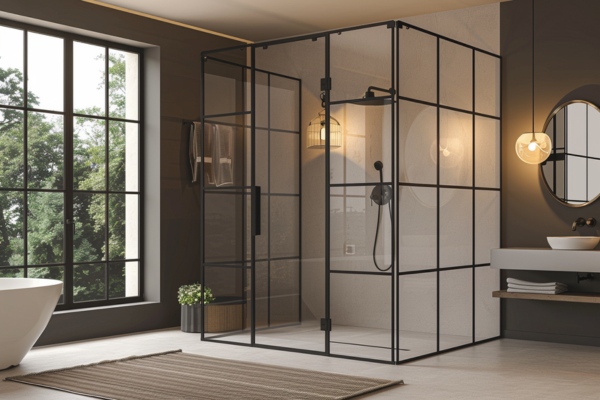
A bathroom renovation doesn’t always require a complete renovation to achieve a fresh look. Modernizing your fixtures is one of the easiest ways. If you haven’t shown any love for your bathroom in over a decade, it’s time to do so.
A simple refresher can work well if the vanity and tiles are in good condition. If you encounter bathrooms that mix metals, you may wonder whether that’s a new trend or something to avoid. Similar to the trend of combining gold and silver, bathrooms can also be enjoyable by incorporating various metals.
Here, we discuss tips for mixing metals in your bathroom.
Choose Your Dominant Metal
A bathroom color scheme typically consists of a primary color and one or two complementary colors. You can follow that same method when selecting your metals. Your dominant metal, typically the color of your largest fixtures like showerheads, faucets, and towel bars, accounts for around 2/3 of all bathroom metal fixtures.
Cool-toned metals such as polished chrome, stainless steel, and brushed nickel blend perfectly with modern bathrooms. On the other hand, metals with warmer undertones, such as gold, brass, and bronze, look fantastic in outdated or rustic-style bathrooms.
Keep the Finish Consistent During Bathroom Remodeling
If you struggle with decorating your area, one helpful guideline is to constantly maintain consistency between materials. For example, the tiles may be of various shapes, but they are all the same color. The upper and lower cabinets may be different colors, but the door frame is the common element.
When mixing metals in your bathroom remodeling services, keep the surface consistent with achieving the desired appearance. When working with various materials, it’s vital to always maintain intentionality with some aspect of the equation. In this case, the finish can connect all of the metals.
If you combine shiny chrome fixtures with gold drawer pulls, consider a glossier gold rather than a matte one. This may provide some uniformity to the materials, even though the metal color is different.
Note The Warmth or Coolness of the Metals
Another feature to consider is whether the metals you select complement one another. While you want them to seem distinct enough from one another that the mixing seems intentional, you don’t want them to feel as if they completely clash.
For example, polished nickel’s undertone is warmer than that of chrome. This warm undertone pairs well with brass or gold, both of which have warm undertones. Although they’re different, they complement one another well, producing a unified visual impact. It’s one of those details that is difficult to pinpoint without being a designer, but it makes a big difference.

Inspiration From Other Room Metal Design
Other rooms in your home should influence your selection of the right tones for your primary and accenting metals. For example, if your kitchen has a polished chrome faucet, consider using chrome as the main metal in your bathroom.
Let’s say your hallways have bronze light switch plates: you may choose to use bronze cabinet handles and sconces in your bathroom, transferring the metal building theme from one room to the next.
Know that Dark Metals Are Every Metal’s Friend
Iron, gunmetal, and other dark metals serve as neutrals and blend well with brass, stainless, and chrome, making them versatile. A popular choice is to blend black metal with gold or brass. So, if you mix these two in your master bedroom remodel by topping your black metal nightstands with brass swing-arm lamps, you’ll create a striking and stylish look.
Can you break your own rule of using only two metals in the bathroom? You probably didn’t because the third metal is the dark bronze chain of a woven pendant, which blends seamlessly with all the other metals in the space, making it a harmonious addition.
The Role of Underlayment in Shingle Roofing Systems
April 1, 2025
Comments are closed.
More News
-
Construction Clean-Up Work? Call Elite Service Solution
February 8, 2025 -
Why hard water consumption is bad for your health
March 10, 2025







